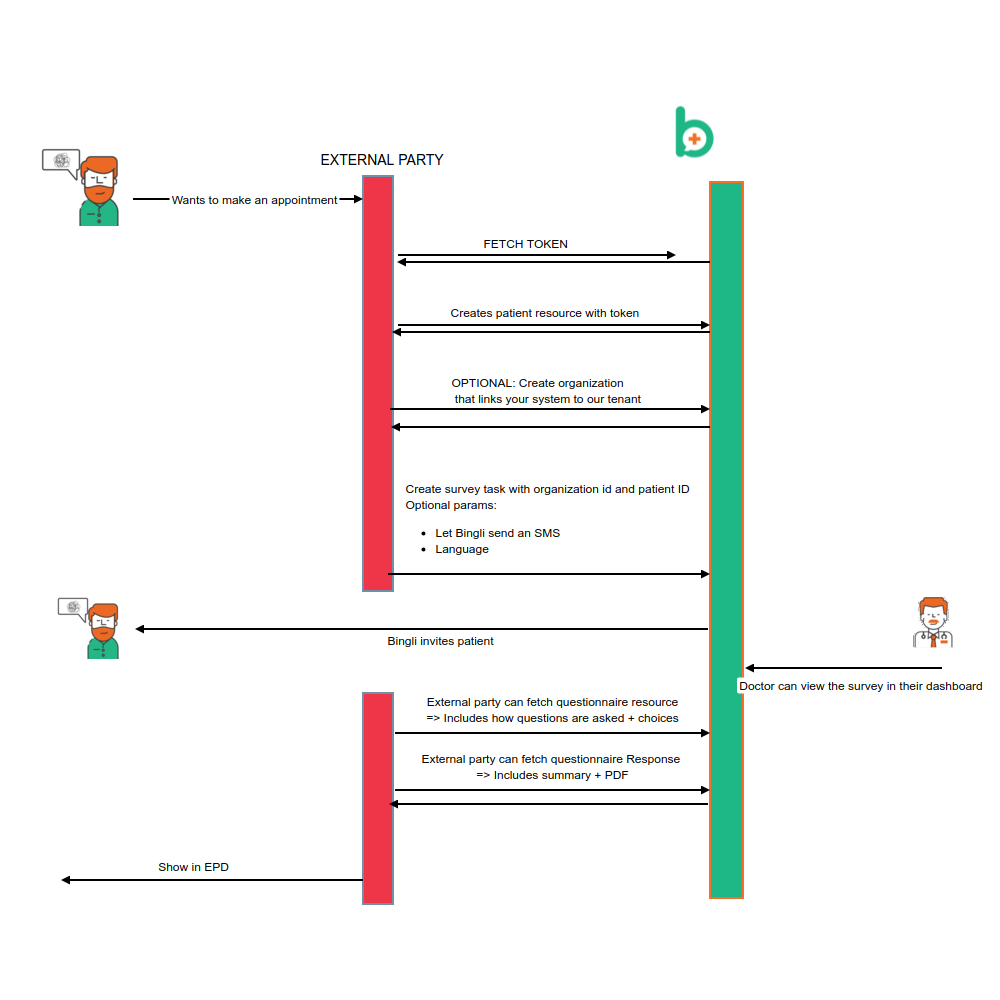FHIR
This guide outlines the default integration process with the Bingli API in FHIR. By following these steps, external systems can seamlessly interact with Bingli’s patient questionnaire flow.
Overview
Bingli enables seamless patient interaction through structured surveys that healthcare providers can integrate into their workflows. This guide explains how to:
- Authenticate with Bingli API
- Create patient resources
- Create survey tasks
- Fetch questionnaire responses
- Display results in an EPD (Electronic Patient Dossier)
Integration Workflow
The following diagram illustrates the integration process:

Prerequisites
Before you start, ensure you have the following:
- Tenant ID: A unique identifier that defines your tenant within Bingli.
- HealthcareService ID: A unique identifier that defines a department or flow within your tenant.
- Account Credentials: A valid account and password with access to the specified HealthcareService.
Steps to Integrate
1. Authenticate with Bingli
To interact with the Bingli API, authentication is required. This ensures secure access and prevents unauthorized usage. Every request needs to be authenticated to maintain data integrity and security.
2. Register Patient Information
Patients need to be registered in the system to be assigned surveys and linked to healthcare services. This step ensures that each patient is correctly associated with their respective healthcare provider.
3. Link Organization (Optional)
If your system operates within a larger network, linking it to a Bingli organization ensures structured access. This step helps maintain clear accountability and better workflow management.
4. Assign a Survey Task
Once a patient is registered, a survey must be assigned to them. This enables the patient to provide necessary medical information before an appointment or consultation, streamlining the healthcare process.
5. Retrieve Questionnaire Structure
The structure of the questionnaire defines how questions will be asked and what options will be available. Fetching this information allows for better preparation and integration into your system.
6. Collect Survey Responses
Once a patient completes a survey, their responses must be retrieved. This step ensures that healthcare providers receive structured, detailed information to aid in diagnosis and decision-making.
7. Display Information in EPD
The collected survey responses can be displayed into an Electronic Patient Dossier (EPD). This ensures that all relevant medical information is stored in one place and is easily accessible to healthcare providers.
Conclusion
By following this guide, you can integrate Bingli's API efficiently into your healthcare system. For further details, visit the Bingli API Documentation or contact support at support@mybingli.com.